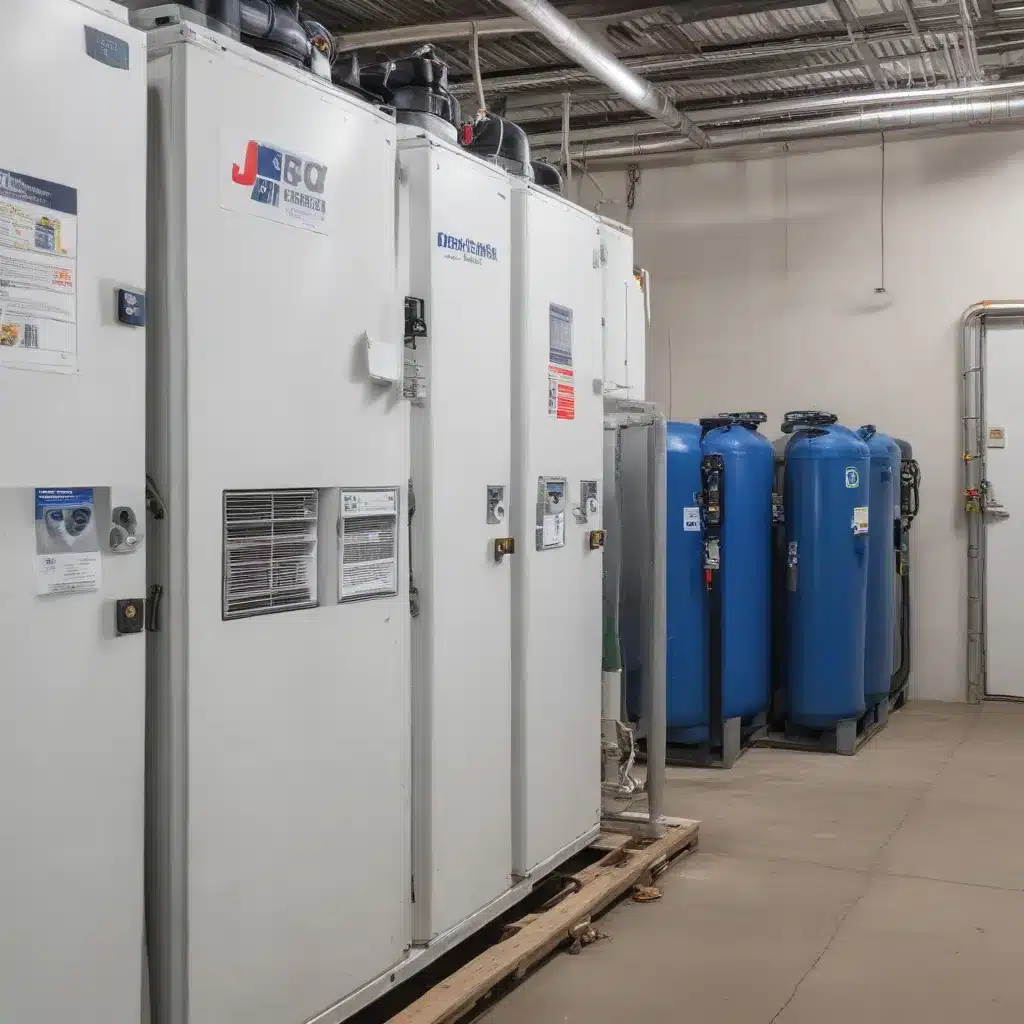
As the world increasingly grapples with the impacts of climate change, the refrigeration industry finds itself at a crossroads. Refrigerants, the lifeblood of HVAC systems and countless other applications, have historically been a significant contributor to greenhouse gas emissions and ozone depletion. However, the tide is turning as a new era of eco-friendly refrigerant alternatives emerges, promising a more sustainable future for the industry.
The Environmental Impact of Refrigeration
Refrigeration and air conditioning systems have become essential components of modern society, enabling the safe storage and transportation of perishable goods, providing year-round comfort in our homes and workplaces, and supporting critical industrial processes. Yet, the very refrigerants that power these systems have been a cause for concern.
Greenhouse Gas Emissions: Many traditional refrigerants, such as chlorofluorocarbons (CFCs) and hydrofluorocarbons (HFCs), are potent greenhouse gases, with global warming potentials (GWPs) hundreds or even thousands of times higher than that of carbon dioxide. When these refrigerants are released into the atmosphere, either through leaks during operation or improper disposal, they contribute significantly to the greenhouse effect and climate change.
Energy Efficiency: The energy-intensive nature of refrigeration and air conditioning systems has also been a point of focus. Older, less efficient equipment can consume substantial amounts of electricity, resulting in elevated carbon emissions from power generation, particularly in regions reliant on fossil fuels.
Regulatory Landscape: In response to these environmental challenges, governing bodies around the world have implemented stringent regulations aimed at phasing down the use of harmful refrigerants and promoting the adoption of more sustainable alternatives. The Montreal Protocol, for instance, has driven the global transition away from ozone-depleting substances, while the European Union’s F-Gas Regulation and the Kigali Amendment to the Montreal Protocol target the reduction of fluorinated greenhouse gases.
Eco-Friendly Refrigerant Alternatives
As the industry navigates these regulatory and environmental pressures, a new era of eco-friendly refrigerant alternatives has emerged, offering promising solutions to the challenges posed by traditional refrigerants.
Natural Refrigerants
Natural refrigerants, such as ammonia (R-717), carbon dioxide (R-744), and hydrocarbons (e.g., R-290, R-600a), have gained traction as sustainable options. These substances are naturally occurring, have negligible or zero GWP, and do not contribute to ozone depletion. Ammonia, for instance, is a highly efficient refrigerant with excellent thermodynamic properties, while hydrocarbons like propane and isobutane provide efficient, cost-effective, and environmentally friendly alternatives in household appliances.
Synthetic Refrigerants
In addition to natural refrigerants, the industry has also seen the development of synthetic refrigerants with significantly lower GWP values. These include hydrofluoroolefins (HFOs) and hydrofluoroalkanes (HFAs), which offer a compromise between performance and environmental impact. HFOs, in particular, have gained attention for their ability to closely mimic the performance of traditional HFCs while reducing the carbon footprint of refrigeration systems.
Refrigerant Blends
To further optimize system performance and environmental compatibility, the industry has also explored the use of refrigerant blends. These are mixtures of two or more refrigerants, formulated to leverage the unique properties of each component and deliver improved efficiency, safety, and sustainability.
The Benefits of Eco-Friendly Refrigerants
The transition to eco-friendly refrigerant alternatives brings with it a host of benefits, positioning the refrigeration industry as a leader in environmental stewardship.
Reduced Carbon Footprint
By adopting low-GWP refrigerants, HVAC and refrigeration systems can significantly reduce their direct greenhouse gas emissions. This, in turn, contributes to the global effort to mitigate climate change and protect the environment.
Improved Energy Efficiency
Many eco-friendly refrigerants, particularly natural refrigerants and advanced synthetic options, demonstrate superior thermodynamic properties that enhance the overall energy efficiency of refrigeration systems. This translates to lower electricity consumption and further reductions in indirect emissions associated with power generation.
Regulatory Compliance
The shift towards eco-friendly refrigerants aligns with the increasingly stringent regulatory landscape, ensuring that organizations remain compliant with evolving environmental policies. By staying ahead of these regulations, businesses can avoid potential penalties and reputational risks while positioning themselves as responsible industry leaders.
Transitioning to Eco-Friendly Refrigeration
Implementing eco-friendly refrigeration solutions is a multifaceted process that requires a holistic approach, addressing both existing systems and new equipment designs.
Retrofitting Existing Systems
For facilities with existing HVAC or refrigeration equipment, retrofitting offers a pathway to incorporate eco-friendly refrigerants without the need for a complete system overhaul. This may involve replacing the refrigerant with a compatible low-GWP alternative, upgrading components to accommodate the new refrigerant, and implementing leak detection methods and recovery solutions to minimize emissions.
New System Design
When designing and installing new refrigeration or air conditioning systems, industry professionals can optimize the selection of eco-friendly refrigerants and incorporate advanced technologies that enhance energy efficiency. This may include the use of natural refrigerants, synthetic blends, or cutting-edge compressor and heat exchanger technologies.
Maintenance and Servicing
Proper maintenance and servicing of refrigeration equipment is crucial to ensuring the longevity and optimal performance of eco-friendly systems. This includes adherence to refrigerant handling protocols, cylinder management practices, and reclamation processes to minimize leaks and ensure the responsible disposal of spent refrigerants.
As the world continues to grapple with the environmental challenges posed by traditional refrigeration, the industry’s embrace of eco-friendly refrigerant alternatives represents a pivotal step towards a more sustainable future. By leveraging the benefits of natural refrigerants, advanced synthetic options, and innovative system designs, HVAC and refrigeration professionals can lead the charge in environmental stewardship, delivering tangible improvements in energy efficiency, greenhouse gas emissions, and regulatory compliance. The future of refrigeration is undoubtedly green, and the time to act is now.

